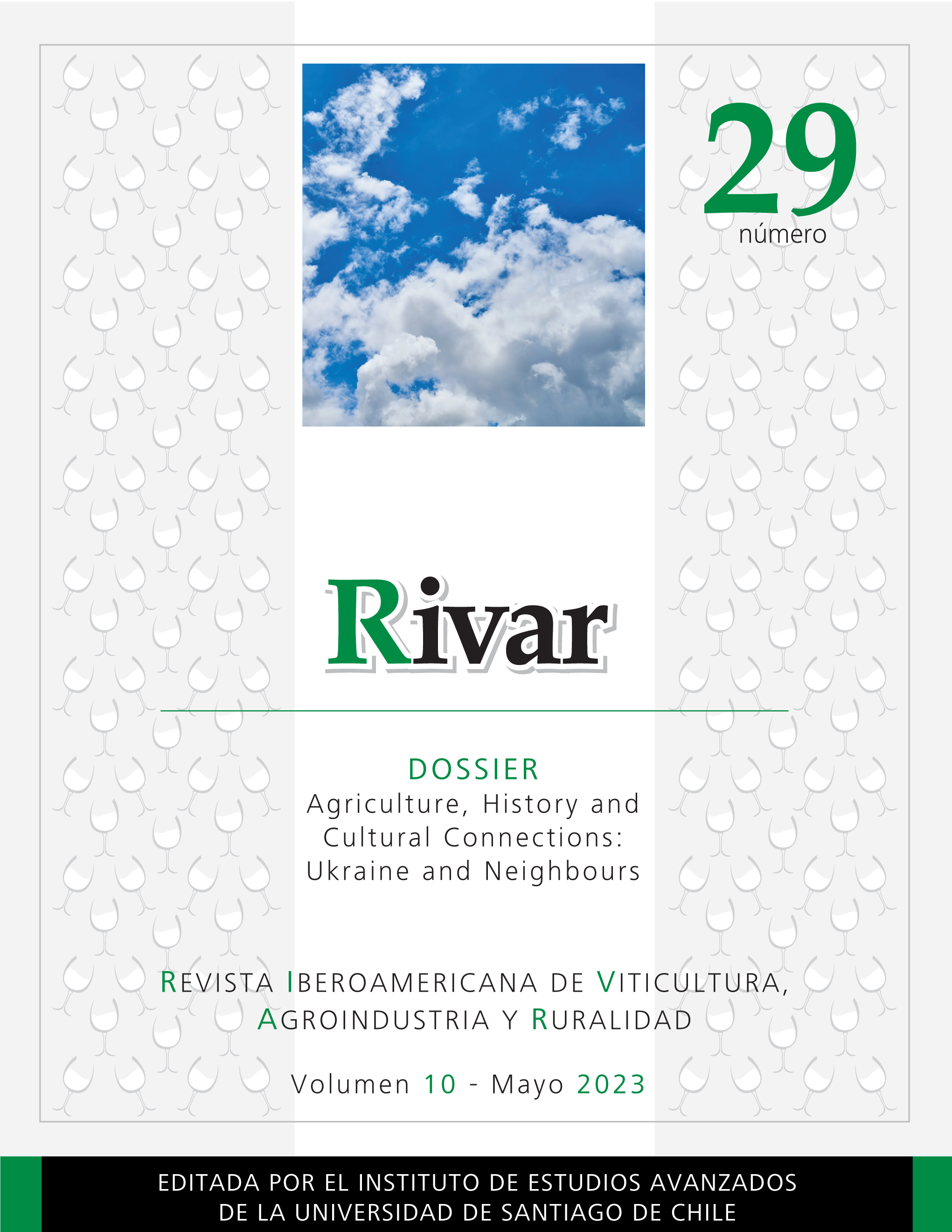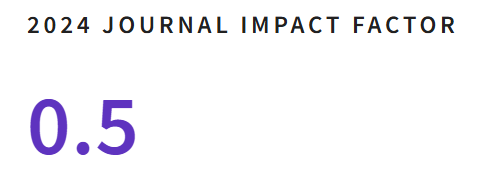Deported Crimean Tatars in the Development of Productive Forces of Agriculture of the Uzbek SSR in the 1960s-1980s
DOI:
https://doi.org/10.35588/rivar.v10i29.5721Palabras clave:
tártaros de Crimea, deportación, actividad laboral, industria, mecanizador, brigada, empresasResumen
Los procesos de migración causados por factores políticos y económicos en condiciones de deportación provocaron un cambio en los límites del reasentamiento, la estructura sociodemográfica, el nivel de educación y la autoconciencia étnica del pueblo tártaro de Crimea. Estudiaremos el impacto de los procesos migratorios en el desarrollo industrial, donde el aumento de la fuerza laboral se debió principalmente a la migración de la RSFSR y los tártaros de Crimea deportados. En base a materiales y documentos de archivo, investigación de campo y entrevistas, junto a cuestionarios a personas de la generación anterior, se ha reconstruido la historia de la actividad laboral de los tártaros de Crimea deportados en la RSS de Uzbekistán en las décadas de 1960 y 1980; se consideran el nivel de urbanización de la emigración, la contribución al desarrollo económico, los logros laborales de los trabajadores e ingenieros tártaros de Crimea de empresas industriales, construcción y agricultura de la república. Los resultados pueden convertirse en la base para encontrar nuevas formas de impulsar la economía a expensas de los migrantes.
Descargas
Referencias
Auanasova, A.; Nurpeisov, E.; Auanassova, K.; Kushenova, G., and Mukhlissov, N. (2021). “The History of the Alash Party in the Context of the Impact on the Processes of Constitutional Acts.” Ancient Asia 12: 1-8. DOI https://doi.org/10.5334/aa.234
Auanassova, A.; Auanassova, K.; Zhumagulov, B.; Karasayev, G. (2018). “The Alash Party on the Kazakh Statehood.” Astra Salvensis 6(1): 129-136.
Aydin, F.T. and Sahin, F.K. (2019). “The Politics of Recognition of Crimean Tatar Collective Rights in the Post-Soviet Period: With Special Attention to the Russian Annexation of Crimea.” Communist and Post-Communist Studies 52(1): 39-50. DOI https://doi.org/10.1016/j.postcomstud.2019.02.003
Aydin, N. (2021). “Electricity Generation Potential of Municipal Solid Wastes Produced in the Province of Edirne.” Sustainable Engineering and Innovation 3(1): 61-67. DOI https://doi.org/10.37868/sei.v3i1.id138
Finnin, R. (2014). “Captive Turks: Crimean Tatars in Pan-Turkist Literature.” Middle Eastern Studies 50(2): 291-308.
Gritsenko, D.A.; Kenzhebekova, R.T.; Deryabina, N.D., and Galiakparov, N.N. (2019). “Development of a ‘Deconstructed’ Vector Based on the Genome of Grapevine Virus A.” Plant Biotechnology Reports 13(2): 169-177. DOI https://doi.org/10.1007/s11816-019-00528-1
Kahraman, A. (2019). “Lenin Bayragı: Between Two Fires.” Bilig 88: 169-188.
Ketners, K. (2020). “Spending Review as Essential Part of Public Sector Budgeting: Latvian Experience.” In Proceedings of the 2020 International Conference Economic Science for Rural Development 53: 97-106.
Khayali, R.I. (2008). Essays on the History of the Socio-Political and Cultural Life of the Crimean Tatars in the Twentieth Century. In https://gkmn.rk.gov.ru/uploads/txteditor/gkmn/attachments//d4/1d/8c/d98f00b204e9800998ecf8427e/phpEtMc72_2.pdf (accessed 04/18/2023).
____. (2006). “Special Contingent: The Crimean People in the Context of the Transformation of Soviet Ethnopolitics (1944-1967).” National Library of Ukraine Named after V.I. Vernasky. In http://www.irbis-nbuv.gov.ua/cgi-bin/irbis_nbuv/cgiirbis_64.exe?Z21ID=&I21DBN=REF&P21DBN=REF&S21STN=1&S21REF=10&S21FMT=fullwebr&C21COM=S&S21CNR=20&S21P01=0&S21P02=0&S21P03=A=&S21COLORTERMS=1&S21STR=%D0%A5%D0%B0%D1%8F%D0%BB%D0%B8%20%D0%A0$ (accessed 04/18/2023).
Khrypko, S.; Aleksandrova, O.; Iatsenko, G.; Ishchuk, A., and Shcherbakova, N. (2020). “Dialogue of Generations as Communicative Dimension of Bread Culture Semantics in the Ukrainian Sacral Tradition.” Tarih Kultur ve Sanat Arastirmalari Dergisi-Journal of History Culture and Art Research 9(4): 333-344. DOI https://doi.org/10.7596/taksad.v9i4.2792
Khusanov, B. and Khaydarova, O. (2019). “Stress-Strain State of Earth Dam under Harmonic Effect.” E3S Web of Conferences 97: 05043.
Korzhik, V.N. (1992). “Theoretical Analysis of the Conditions Required for Rendering Metallic Alloys Amorphous During Gas-Thermal Spraying. II. Phase Formation During Solidification of the Sprayed Material.” Soviet Powder Metallurgy and Metal Ceramics 31(10): 826-830. DOI https://doi.org/10.1007/bf00797499
Küçük, M. and Karadayi, T.T. (2020). “An Ecological Settlement Design for Refugees in Kocaeli.” Heritage and Sustainable Development 2(2): 69-88.
Kulpin-Gubaidullin, E.S. (2013). “Crimean Tatars: The Evolution of Self-Identification.” In https://interpretive.ru/termin/krymskie-tatary.html (accessed 04/18/2023).
Pozharskiy, A.S.; Aubakirova, K.P.; Gritsenko, D.A.; Tlevlesov, N.I.; Karimov, N.Z.; Galiakparov, N.N., and Ryabushkina, N.A. (2020). “Genotyping and Morphometric Analysis of Kazakhstani Grapevine Cultivars versus Asian and European Cultivars.” Genetics and Molecular Research 19(1): gmr18482. DOI https://doi.org/10.4238/gmr18482
Reshitov, N. (2020). Myrzachel karamanlary. Simferopol, Tarpan.
Syrdarya Truth (1967). “Regional Newspaper of the Syrdarya Region of the Uzbek SSR. No. 123.” Syrdarinskaya Pravda, October 7, 1967.
United Nations ESCAP (2013). “Analytical Report.” In https://www.unescap.org/sites/default/d8files/Urbanization%20in%20CA_RUS_0.pdf (accessed 04/17/2023).
Usmanov, A.U. (1984). “Training of Industrial Personnel in Uzbekistan and the Growth of their Creative Activity (1956-1965).” DisserCat. Electronic Library of Dissertations. In https://www.dissercat.com/content/podgotovka-molodykh-rabochikh-korennykh-natsionalnostei-v-respublikakh-srednei-azii-1971-198 (accessed 04/18/2023).
Voutira, E. (2014). “Ideology, History, and Politics in Service of Repatriation. Pontic Greeks and Crimean Tatars.” Focaal 70: 37-48. DOI https://doi.org/10.3167/fcl.2014.700104
Vozgrin, V.E. (2013). The History of the Crimean Tatars: Essays on the Ethnic History of the Indigenous People of Crimea. In http://resource.history.org.ua/item/0013435 (accessed 04/18/2023).
Wilson, A. (2014). “The Crimean Tatars: A Quarter of a Century after their Return.” Security and Human Rights 24(3-4): 418-431.









